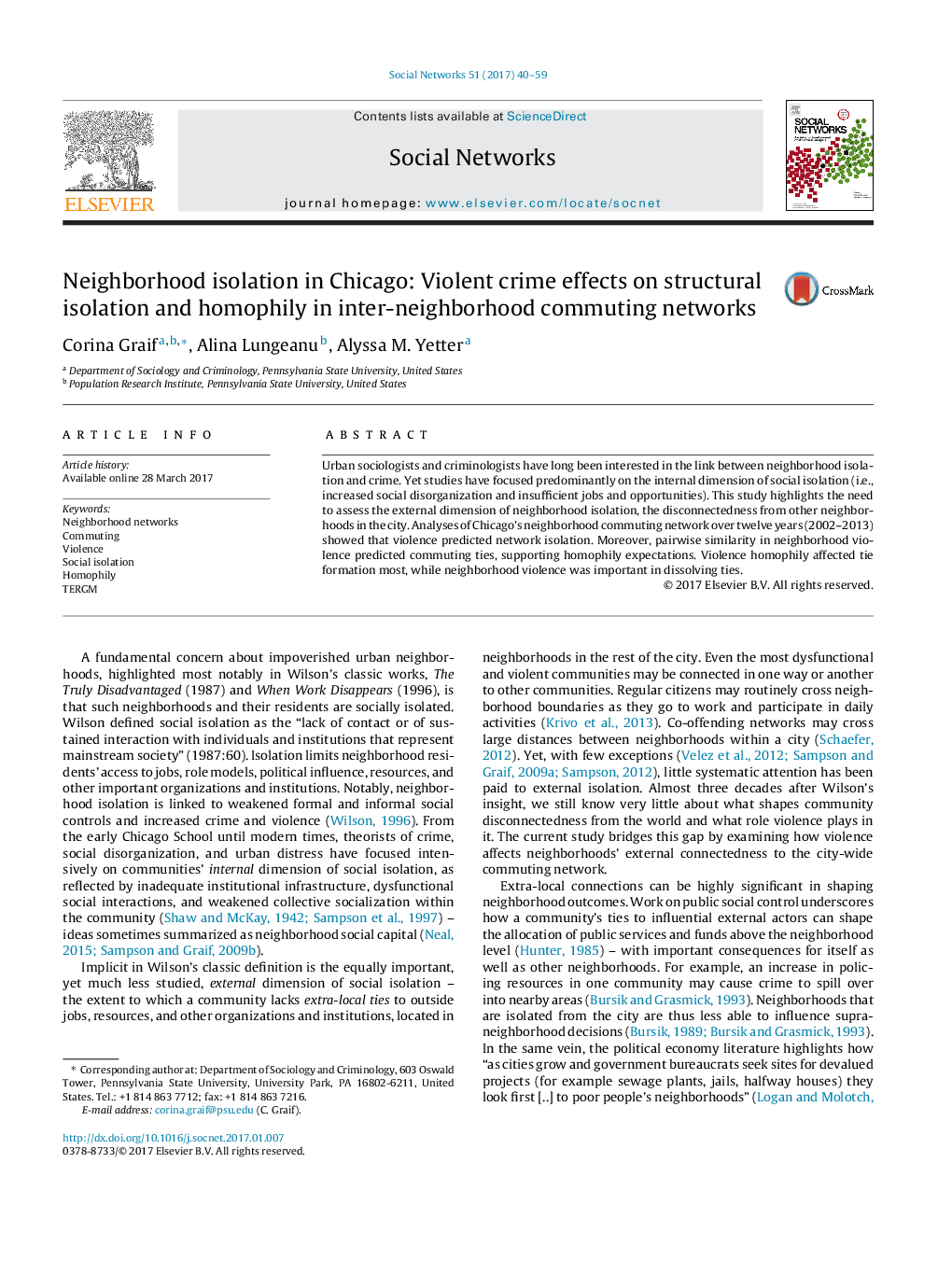| Article ID | Journal | Published Year | Pages | File Type |
|---|---|---|---|---|
| 5126756 | Social Networks | 2017 | 20 Pages |
â¢We examined violence effects on external social isolation of urban neighborhoods.â¢Commuting networks among Chicago's neighborhoods were analyzed over twelve years.â¢Violence predicted residential neighborhood isolation from the citywide network.â¢Similarity in violence predicted inter-neighborhood ties, indicating homophily.â¢Violence homophily affected tie formation; neighborhood violence dissolved ties.
Urban sociologists and criminologists have long been interested in the link between neighborhood isolation and crime. Yet studies have focused predominantly on the internal dimension of social isolation (i.e., increased social disorganization and insufficient jobs and opportunities). This study highlights the need to assess the external dimension of neighborhood isolation, the disconnectedness from other neighborhoods in the city. Analyses of Chicago's neighborhood commuting network over twelve years (2002-2013) showed that violence predicted network isolation. Moreover, pairwise similarity in neighborhood violence predicted commuting ties, supporting homophily expectations. Violence homophily affected tie formation most, while neighborhood violence was important in dissolving ties.
